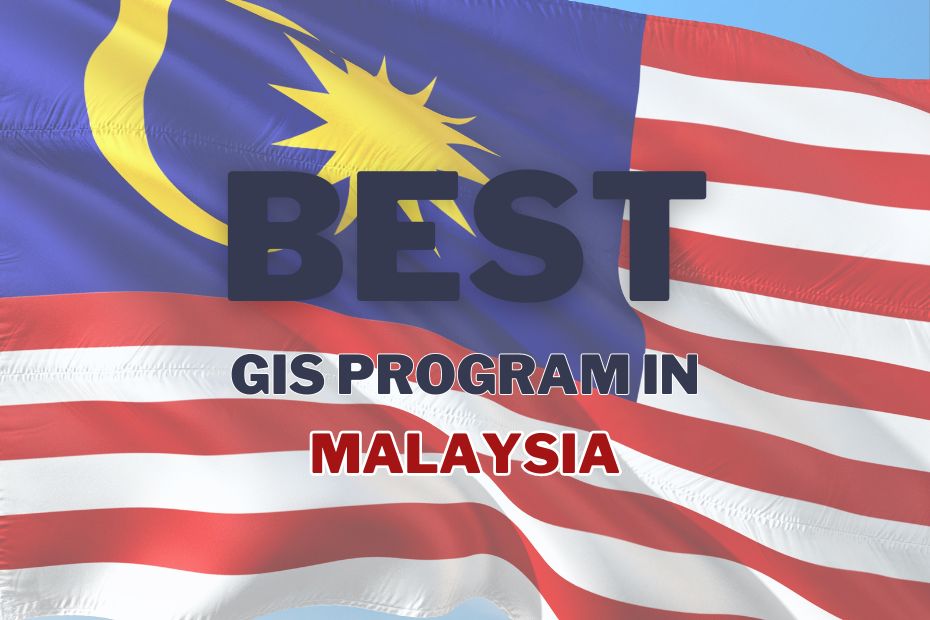In the realm of geospatial information systems (GIS), Malaysia stands as a beacon of excellence. This Southeast Asian nation has harnessed the power of GIS technology to revolutionize various sectors, from urban planning to environmental conservation. In this comprehensive article, we will delve into the world of GIS program in Malaysia, exploring their significance, applications, and the impact they have had on the nation’s development.
In Malaysia, several universities offer top-notch GIS master’s programs. These programs typically cover advanced spatial analysis, remote sensing, and geospatial technology applications. Some notable institutions to consider are University of Malaya (UM) , Universiti Teknologi Malaysia (UTM), and Universiti Kebangsaan Malaysia (UKM), each known for their strong curriculum and faculty expertise in the field.
The Evolution of GIS in Malaysia
Malaysia has come a long way in harnessing the potential of GIS. The inception of GIS in the country dates back to the late 1980s when the government recognized its importance in national development. Since then, GIS has evolved significantly, becoming an integral part of Malaysia’s growth story.
GIS Program In Malaysia
Geographic Information Systems (GIS) is a rapidly growing field in Malaysia, with applications in various sectors like urban planning, environmental management, disaster management, and precision agriculture. Several universities offer excellent GIS programs, catering to both undergraduate and postgraduate levels. Here’s a glimpse into some of the notable ones:
Universities:
1. University of Malaya (UM)
Located in Kuala Lumpur, UM offers a well-established Master of Science (MSc) in Geoinformatics program with a focus on advanced geospatial technologies and applications.
The program duration is 12 months for full-time students and 24 months for part-time students. Fees vary depending on your citizenship status and scholarship eligibility.
2. Universiti Teknologi Malaysia (UTM)
Situated in Johor Bahru, UTM boasts a Bachelor of Science (BSc) in Geoinformation Science program, providing a strong foundation in GIS principles and practical skills.
The duration is 4 years for full-time students. Fees are similar to UM’s structure.
3. Universiti Kebangsaan Malaysia (UKM)
Based in Bangi, UKM’s MSc in Remote Sensing and GIS program delves into advanced remote sensing techniques and their integration with GIS for various applications.
The program duration is 12 months full-time or 24 months part-time. Fees follow the same pattern as UM and UTM.
4. Universiti Putra Malaysia (UPM)
UPM, located in Serdang, offers a specialized MSc in Remote Sensing and GIS program emphasizing environmental applications and resource management.
The duration and fee structure are similar to UKM’s program.
5. Geomatika University College
A premier private institution in Shah Alam, Geomatika focuses exclusively on geospatial education. They offer a Bachelor of Science (Hons) in GIS & Application Development program with a strong emphasis on practical skills and industry exposure.
The duration is 4 years, and fees are slightly higher than public universities.
Course Details:
The specific courses offered within each program vary slightly between universities. However, some common core subjects include:
- Introduction to GIS
- Cartography and Geospatial Data
- Remote Sensing and Image Analysis
- Spatial Analysis and Modeling
- Geodatabase Design and Management
- GIS Programming and Application Development
Duration and Fees:
- MSc programs: Typically 12 months full-time or 24 months part-time. Fees range from MYR 25,000 to MYR 50,000 depending on the university and scholarship availability.
- BSc programs: Usually 4 years full-time. Fees at public universities are significantly lower than private institutions, ranging from MYR 5,000 to MYR 10,000 per year, while private universities can charge up to MYR 30,000 per year.
Additional Information:
- Many universities offer scholarships and financial aid for GIS programs.
- Internship opportunities are often available to gain practical experience.
- GIS is a growing field in Malaysia, with strong job prospects in various sectors.
Conclusion:
In conclusion, Malaysia’s GIS programs have not only transformed the country but also set an example for the world. With applications spanning urban planning, environmental conservation, disaster management, education, and research, GIS has become an indispensable tool in Malaysia’s journey towards progress.
FAQs: GIS Program In Malaysia
How has GIS benefited urban planning in Malaysia?
GIS has optimized city layouts, managed infrastructure, and improved public services in Malaysia by analyzing population trends and traffic patterns.
What role does GIS play in environmental conservation in Malaysia?
GIS helps monitor and protect Malaysia’s ecosystems by tracking deforestation, managing wildlife habitats, and ensuring sustainable practices.
How does Malaysia promote geospatial education?
Malaysia promotes geospatial education by offering specialized courses in GIS at universities, ensuring a continuous influx of talent into the field.
